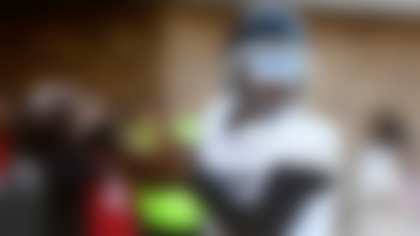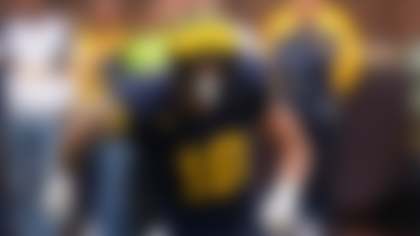After a head-spinning virtual offseason, the NFL is finally springing back to something closer to life as we know it this week, with all players required to report to training camp by Tuesday.
Life as we know it, though, is much different now than anything we have seen before, as the players who have already reported -- and had to head straight for a COVID-19 test -- can attest. As Dr. Allen Sills, the NFL's Chief Medical Officer, said in an interview a few weeks ago: "It won't feel normal because it won't be normal."
Myriad changes to everything from the practice schedule to the roster size have been made to try to create the safest possible environment to prepare for the season and then -- and this deserves emphasis -- get through the entire season. Still, with no fans allowed at any camp, and no preseason games at all, this run-up to the regular season may feel remote. Here, then, is a primer on all the things to know about what will be happening in the next six weeks. (The Texans and Chiefs are three days ahead of the schedule as compared to the rest of the league, because they play the Thursday night season opener.)
How much will players be tested?
A lot. Players can't even enter their team's building before passing three COVID-19 tests that are administered within a four-day period. Starting Tuesday and continuing through July 31, players will show up, take tests on back-to-back days, then go home and self-isolate for 24 hours, before returning on Day 4 to take another test -- and only after that third one is negative can they proceed to getting their equipment and physicals on Aug. 1 and 2. Teams have already been told that the initial number of positive tests could be troublingly high, but they will level off once players are in the protocol for organizations.
After those initial three tests, players will be tested every day. (The turnaround on test results, the NFL said, will be 24 hours.) If, at the end of the first two weeks, the positive test rate is below 5 percent for all of the team's personnel (players, coaches, staff), that team's testing will revert to every other day. If it is above 5 percent, daily testing would continue.
Important caveat: Doctors for the league and the players union have said repeatedly that they expect testing protocols to change throughout the season, as doctors learn more about the virus and its transmission and as testing develops further.
How many practices will there be?
This camp won't look like any other camp we have seen. Because there were no OTAs or minicamps, the league and players union agreed to dramatically change the structure of camp, in the hopes of avoiding injuries as players start to practice. The resulting schedule is essentially a mash-up of OTAs and training camp. From Aug. 3 through 11, players will have an acclimation period -- 60 minutes in the weight room and 60 minutes of on-field conditioning. No conditioning tests may be administered during this period. In addition to strength-and-conditioning work, teams can have 60-minute walkthroughs on each of the first four days and 75-minute walkthroughs on each of the last four days. Aug. 8 is a mandatory off day.
A gradual ramp-up period runs from Aug. 12 through 16, with Aug. 15 being a mandatory off day. The first practice can be 90 minutes, with 15-minute increases each day, up to a maximum of 120 minutes. Players are allowed to be on the field 3.5 hours daily, so the remainder of time will be spent in walkthroughs. On the 12th and 13th, players can wear helmets. On the 14th and 16th, they can wear helmets and shells but have no live contact.
Finally, from Aug. 17 through Sept. 6, 14 padded practices will be allowed. The Texans and Chiefs can start padded practices on Aug. 14th.
That does not seem like much.
It's not, especially because there are no joint scrimmages and no preseason games. It will certainly be harder for coaches to evaluate their rosters, and the expectation, even among coaches, is that play will look ragged in the opening weeks of the regular season. But the goal of this camp is to avoid a rash of soft-tissue injuries after a dormant offseason (like the league saw when it held training camp after the 2011 lockout) and to minimize contact and the risk of exposure in games that don't count (hence, the absence of preseason games). The real losers with this schedule are the undrafted free agents and late-round draftees, who won't get much opportunity to make a big enough splash to make the roster.
What else will be done to try to keep players healthy?
All team personnel will wear high-tech contact-tracing monitors, which should help the league immediately determine who came into close contact with players who test positive, making it easier to isolate and test them. The agreement between the league and union also restricts high-risk COVID-19 conduct off the field -- things like being at an indoor night club or bar, or being at an indoor house party with more than 15 people. No indoor concerts, no pro sporting events, no indoor religious services with more than 25 percent capacity. A team can discipline a player if he violates those rules. The league is also recommending players wear new face shields on the gridiron.
And facilities have undergone a massive change, as teams have to comply with a protocol that emphasizes social distancing. For instance, there must be at least 6 feet between players in the locker room. Some teams will move meetings and weight rooms outdoors.
And some teams have considered taking extra precautions with their quarterbacks to minimize the risk of an outbreak, including holding quarterback meetings remotely instead of in person.
And if a player does not want to play at all?
He can opt out, as Kansas City Chiefs offensive guard Laurent Duvernay-Tardif has already done. Duvernay-Tardif is a doctor and has been working as an orderly in a long-term care facility in Canada during the pandemic. Players considered at greater risk for COVID-19 (those with moderate to severe asthma, sickle cell disease, Type 2 diabetes, for example) can opt out and receive a $350,000 stipend and an accrued NFL season. Players without greater risk, like Duvernay-Tardif, will get a $150,000 stipend, but will not receive an accrued season. The contracts of all individuals who opt out -- no matter the perceived risk -- will toll to next year. After the NFL and NFLPA sign on the dotted line officially implementing all adjustments to the collective bargaining agreement, players will have one week to decide whether or not they're going to opt out.
Will there be more players on the roster?
Teams can have as many as 90 players on the roster until Aug. 16, when everybody must have 80 players. But only 80 players are allowed in the facility at one time, so a team that has more players in the first weeks of camp would have to plan split-squad workouts. Practice squads will have 16 players, and four of them can be protected weekly from being acquired by another team.
What about unsigned free agents like Jadeveon Clowney?
As of the weekend, they were in a holding pattern. No workouts for free agents are permitted right now, although further guidance from the league is expected.
Is it conceivable a team would have to shut down temporarily because of an outbreak?
Yes. There has been no number given or what conditions would have to be present, but Dr. Sills has made it clear that there are scenarios where a team would have to stop working because of an outbreak in the building. That opens up the possibility that a team could have to postpone and reschedule games or, more unlikely, forfeit a game this season. And yes, that same possibility exists for the league as a whole -- conditions on teams and in the country could force it to stop temporarily.
Bottom line: Does anybody have an advantage as they prepare for the season?
Unquestionably, the circumstances favor teams with continuity. With the lack of offseason gatherings, new coaches are meeting their players in person for the first time this week. New coordinators have to install new systems with just six weeks of in-person work to get ready. Teams that turned over their rosters have a lot of familiarization ahead of them. The teams returning their coaches and most of their rosters, especially starting quarterbacks -- like the Chiefs and Saints -- are far ahead of the pack before they even step on the field.
Follow Judy Battista on Twitter @JudyBattista.












